NIBS #1, electronics tidbits
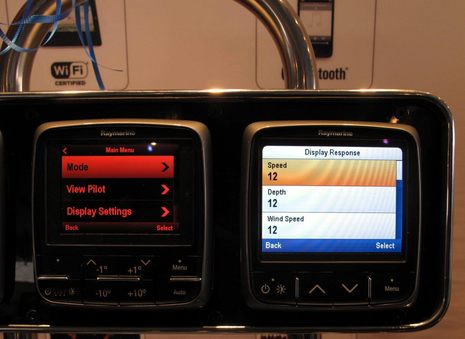
It's rare that I go so long without writing an entry, and I'd like to say that I spent the time digging deep into electronics at the Newport International Boat Show. But the truth is that most of my time there went to working as one of the several Newport for New Products award judges, plus I met with my Cruising World and Yachting editors (first office visit ever ;-) and did a lot of driving. So unfortunately I didn't get much more than a glance at the new Raymarine i70 instrument display (and p70 pilot head) seen above. The i70 display is wicked bright, the buttons are big, and moving through menus is snappy, but a fuller appraisal will have to wait. Incidentally, the WiFi and Bluetooth signs in the background of course refer to Ray's new e7 MFD and are germane because those two capabilities are probably the main reasons that the e7 won the Best New Boating Product award...
Using Bluetooth and WiFi to integrate marine electronics with consumer electronics is quite a noteworthy innovation, and innovation is generally the primary criteria for awards like this. Seeing the e7 wirelessly control audio tracks on an iPhone that was playing inside a Fusion stereo dock while also repeating its screen to an iPad was a wow, but I was particularly glad to hear Raymarine President Dave Bimschleger confirm the company's commitment to making the RayView iPad app (now available free on iTunes) fully functional; he wouldn't promise a date, but someday e7 owners will be able to use an iPad to run their MFD from wherever they want on board...
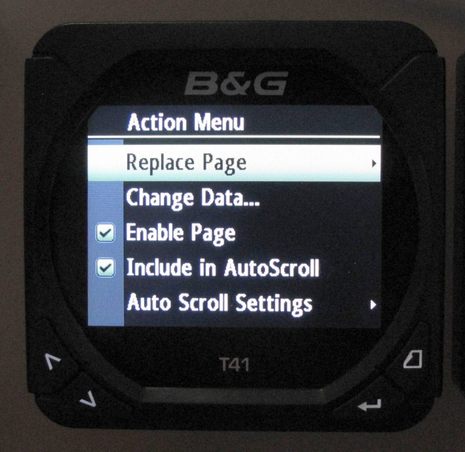
I didn't get to spend much time with the new B&G Triton display either, but again it's so bright that it's hard to photograph. (Though I did notice that both new displays are a bit more pixelated than the press release images indicate.) Triton also got the attention of the new product judges, particularly the ability of the auto pilot keypad to make the T41 into a full AP head as well as an instrument, or to work alongside the pilot head abilities of the B&G Zeus or Simrad NS series (as long as the pilot itself is a Navico model). And check out the nifty new install scheme on the T41. After the holesaw cut, you just fasten in that black collar and henceforth the display can be twisted in or out without tools and without plastic fastening covers to break or lose.
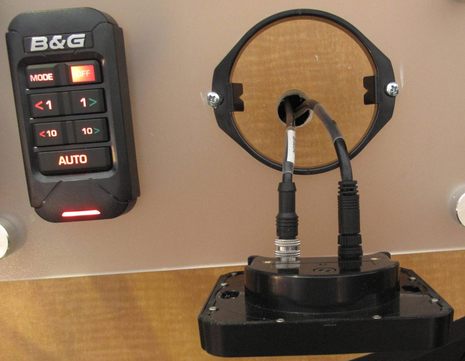
There were a couple of interesting brand new electronics lines I met in Newport -- like the AquaBotix underwater cameras and the Siren Marine cellular monitoring systems -- but I'll cover them separately. The rest of today's entry, and tomorrow's, will be about details I noticed on some of the many new boats I got to tour. For instance, the EmpirBus "breaker" panel installed below on this Hallberg Rassy 372 was not the only sign of distributed power systems I saw, but it was interesting that not one of the company representatives who showed us a DP equipped boat mentioned it! I guess digital power management is still so novel and confusing, perhaps even to the sales people, that it's not worth getting into on first visit...
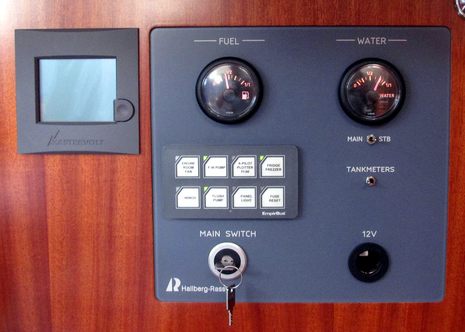
But who wouldn't show off a wireless jet drive and thruster control, especially one mounted in a perfectly varnished teak case. This Hinckley JetStick is an accessory on the company's retooled Talaria 55, and pushing or twisting that single control will make the boat do anything that the JetStick mounted by the helm can, including full planing speed ahead (I was told). Of course its real value is for docking, and making docking easier has become a big deal in yachting...
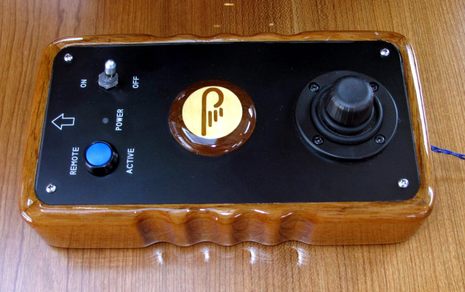
For instance, the Sabre 48 Salon Express that also premiered in Newport is designed for Zeus drives and while it lacks a portable joystick, Zeus does have a "Skyhook" dynamic positioning feature so once you get the boat up to the dock there's no rush to get the lines squared away. Meanwhile, the Palm Beach 55, which won the over 30 foot power boat category, has a wired remote that I'm not sure Volvo Penta had pictured being fashioned for its IPS drives. The remarkable qualities of the Palm Beach, whose 50 model won overall power boat honors last year, are an elegant use of space and high performance. In fact, when we looked at the 55 last Wednesday, it was only about 24 hours after it had been craned off a ship in Philadelphia, and three of those hours had been spent doing a wash down in Cape May and another five show prepping in Newport. And I don't believe that it was flat calm out there last Tuesday night.
Finally, note that while all the boats mentioned so far are on the high end, the two we picked as overall winners -- the perfectly modernized Destino 20 runabout and the super safe but super fast BayRaider 20 daysailer -- are both under 30 feet.
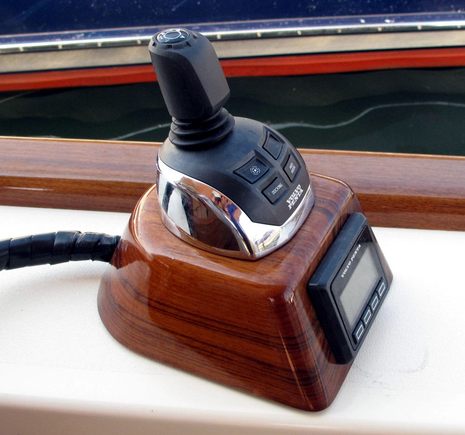

 Share
Share
I've heard the rumor that aged Raymarine's PC I/F box would be updated and would have some neat interface such as USB, Ethernet and WiFi. Is there any indication about that at the show?